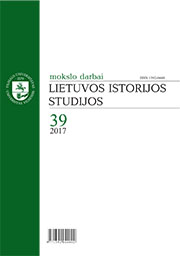ŽEMĖS ŪKIO KOOPERACIJA IR LIETUVOS EKONOMINĖ PAŽANGA XX AMŽIAUS TREČIAME DEŠIMTMETYJE
AGRICULTURAL COOPERATION AND ECONOMIC PROGRESS OF LITHUANIA IN THE 1920s
Author(s): Zenonas Butkus, Andrius GrodisSubject(s): Agriculture, Economic development, Interwar Period (1920 - 1939)
Published by: Vilniaus Universiteto Leidykla
Keywords: agricultural cooperation; internal market; agricultural products; export; agrarian politics;
Summary/Abstract: This study analyzes the contribution of the cooperative movement to the general progress of the Lithuanian economy in the first decade of independence. The cooperation of small agricultural producers under the postwar destitution was considered as the optimal way to reconstruct and modernize the agricultural sector of Lithuania. The consumers’ cooperatives were set up most rapidly during the first years of independent life of the country, under the prevailing, permanent shortage of goods. They provided the population with basic consumer goods, suppressed speculation and contributed to the regulation of retail prices in the country. The expansion of agricultural cooperation intensified in the beginning of 1920s, after the funding of agricultural sector started to increase consistently. Also, after the introduction of the litas and the decline of the agricultural production export to Germany, Lithuania had to adapt to a more demanding market of Great Britain. State-supported cooperative unions began developing competitive agricultural livestock and poultry industries as well as engaging in various programs of farming culture improvement. Dairy farming, organized on the basis of cooperation, opened prospects to change the country’s export structure, in this way initiating the export of certain processed products of higher added value instead of raw agricultural products.
Journal: Lietuvos istorijos studijos
- Issue Year: 2017
- Issue No: 39
- Page Range: 40-63
- Page Count: 24
- Language: Lithuanian

